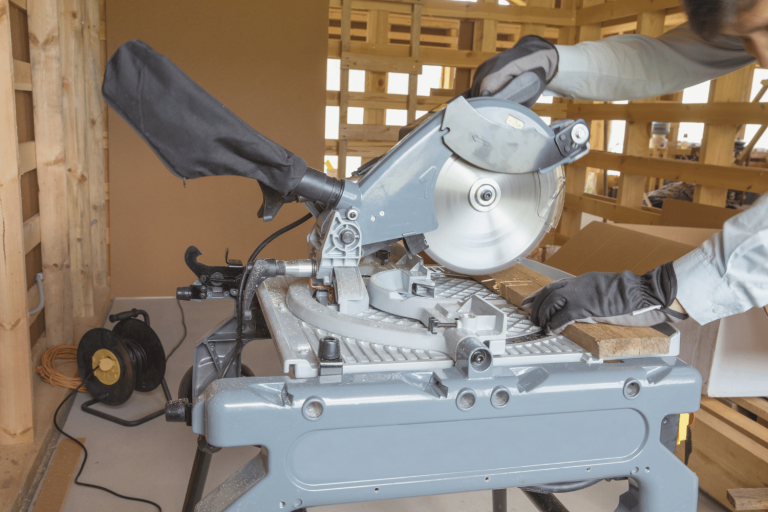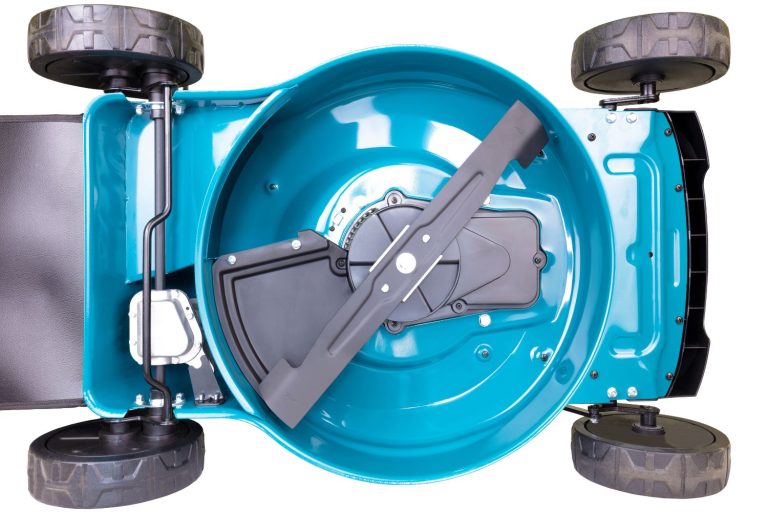How to Use a Jigsaw: Say Goodbye to Crooked Cuts
Are you tired of rough and uneven cuts on your woodworking projects? Do you want to achieve smooth and professional results every time? Look no further than the trusty jigsaw. With its versatile capabilities, a jigsaw is an essential tool for any DIY enthusiast or professional woodworker.
In this article, we’ll show you how to use a jigsaw for smooth, professional cuts that will elevate the quality of your projects. From selecting the right blade to mastering cutting techniques, we’ve got you covered.
With our tips and tricks, you’ll be able to take your woodworking skills to the next level and impress everyone with your precision and finesse. So let’s get started and learn how to use a jigsaw!
Key Takeaways
- Proper safety precautions and blade selection are crucial for using a jigsaw effectively and safely.
- Correct setup of the saw and workpiece is necessary for accurate and smooth cuts, and techniques such as using guides and adjusting blade speed and depth can enhance results.
- Accessories and blade types can be used to improve the functionality of the jigsaw for specific materials.
- Achieving a polished final product involves additional steps such as sanding, staining, and polishing.
Jigsaw Basics
If you’re looking to make smooth, professional cuts in your woodworking projects, a jigsaw is an essential tool. This versatile saw can handle curves and intricate shapes with ease, making it perfect for a wide range of applications.
To get started, it’s important to familiarize yourself with the basic parts of a jigsaw so you can use it safely and effectively.
What is a Jigsaw?
You may be wondering, “What exactly is a jigsaw?” Well, let me tell you: it’s a versatile power tool that can easily make smooth, professional cuts in a variety of materials such as wood, metal, and plastic.
Whether you’re a DIY enthusiast or a professional carpenter, the uses of a jigsaw are endless. This powerful tool allows for precise cutting in intricate shapes and curves with ease.
Some safety precautions to keep in mind when using a jigsaw include wearing protective gear such as goggles and gloves to avoid any injuries. It’s also essential to maintain your jigsaw regularly by cleaning it after every use and inspecting the blade for any damages.
When selecting a blade for your jigsaw, it’s important to consider the type of material you will be working with. Jigsaws come with different speed control settings, allowing users to adjust the tool’s speed according to their needs. Additionally, there are various accessories available that enhance the functionality of this power tool, such as dust collection systems or laser guides.
Proper storage of blades is crucial for maintaining their sharpness and preventing them from rusting over time.
Parts of a Jigsaw
One of the essential components of a jigsaw is its blade, which can be selected according to the material being cut. Jigsaws come with different blade types that cater to various materials like metal, wood, and plastic. The blade guide holds the blade in place, ensuring that it stays straight while cutting. The shoe plate or base provides stability and support during operation, while the orbital action feature allows for faster and smoother cuts by oscillating the blade in an elliptical motion. Speed control varies depending on the model but generally ranges from 500 to 3000 strokes per minute (SPM). Dust extraction ports are present on some models to suck up sawdust as you work.
The bevel angle refers to the ability of a jigsaw to tilt left or right for angled cuts. Most models allow for 0-45 degree tilts. Safety features should also be considered when using a jigsaw, such as an automatic stop function when pressure is released from the trigger and dust blower that keeps your line of sight clear while working. Understanding the parts of your jigsaw is vital before proceeding with any project involving this tool. With these features in mind, you can now move on to learning about blade selection, changing, and saw setup seamlessly.
Blade Selection, Changing, and Saw Setup
Now that you know the basics of using a jigsaw, it’s time to talk about blade selection, changing, and saw setup.
Depending on what material you’re cutting – wood, metal, plastic – you’ll need to choose the right type of blade for a smooth cut.
Changing blades is easy with the right technique and tools, and setting up your saw and workpiece correctly is crucial for accuracy.
Blades for Different Materials
When cutting metal with a jigsaw, it’s important to use a bi-metal blade that can handle the hardness of the material. Bi-metal blades have teeth made out of two different materials, allowing them to cut through metal without getting dull quickly. To cut wood, you should use a high carbon steel blade as it is flexible and can cut through thick materials easily. Ceramic blades are ideal for cutting tiles and other brittle materials because they produce less dust and chips compared to diamond-coated blades.
To choose the right blade for your project, consider the thickness and type of material you will be cutting. For thicker materials, use larger teeth with fewer per inch (TPI) on your blade, while thinner materials require smaller teeth with more TPI. Proper care and maintenance of your blade is also crucial in ensuring its longevity. After every use, clean off any debris or residue from the blade using a wire brush or compressed air. Using a guide can also help ensure smooth cuts without veering off course. Now that you know which blades to choose for different types of material, let’s move on to how to change them easily for each new project!
How to Change the Blade
To easily change the blade on your jigsaw, all you need is a screwdriver and a few minutes of your time. Before beginning, always prioritize safety precautions by unplugging the saw from its power source and wearing protective gloves.
Begin by locating the blade release lever or button, which may be located on the side or top of your saw depending on the model. Once located, press or pull it to release the current blade from its holder. If there is no visible release mechanism, consult your user manual for specific instructions.
Once removed, inspect both sides of the blade for any damage or wear before disposing of it properly. To install a new blade, align it correctly with the holder and push until it clicks into place securely. Remember to tighten any necessary screws using a screwdriver before resuming use.
Proper maintenance and troubleshooting can also extend the life of your blades and prevent common mistakes such as bending or breaking during use. With these steps complete, you’re ready to move on to setting up your saw and workpiece for precise cuts.
Setting Up the Saw and Workpiece
First, you’ll want to make sure that your jigsaw is securely mounted to a stable work surface, such as a sawhorse or workbench. This will prevent the saw from moving around while you’re making cuts and ensure accurate results.
Once your saw is set up, position your workpiece securely on the table. Use clamps to hold it in place if necessary.
Before starting the cut, take some time to prepare your workpiece. Make sure it’s free of any obstructions or debris that could interfere with the blade’s movement. Additionally, lubricate the blade and adjust its speed as needed for optimal performance. Be mindful of safety measures during this process by wearing gloves and eye protection. Also consider using dust extraction to keep your workspace clean and safe from debris.
Finally, adjust the blade guide as necessary for smooth cuts without binding or kickback.
How to Use a Jigsaw – Cutting Techniques
Now that you’ve got your blade selection and saw setup down, it’s time to master cutting techniques for making straight, curved, and beveled cuts with your jigsaw.
Making straight cuts requires steady hands and proper positioning of the tool.
For curved cuts, you’ll need to adjust the speed and angle of the jigsaw while maintaining control.
Creating beveled cuts involves tilting the base plate at a specific angle to achieve precision.
Let’s dive into these techniques so you can confidently tackle any project with your jigsaw!
Straight Cuts
Get ready to impress your friends and family with circular saw level straight cuts using your jigsaw. Making straight cuts is essential for any woodworking project, and with the right technique, you can achieve professional-looking results. Here are some tips to help you make straight cuts with ease:
- Use a saw guide or fence to keep the saw aligned with the cutting line.
- Make sure the blade is perpendicular to the workpiece surface.
- Use a pencil or marker to draw a clear cutting line on the workpiece.
- Securely clamp or hold down the workpiece before making any cuts.
- Adjust blade speed and depth according to the thickness of the material being cut, and regularly clean and sharpen blades for optimal performance.
By following these guidelines, you can ensure that your jigsaw will make precise straight cuts every time. Now that you’ve mastered this technique, let’s move on to learning how to make curved cuts.
Curved Cuts
You’re going to love how easy it is to create fun and funky shapes with your jigsaw – just let your imagination run wild! Making curved cuts with a jigsaw requires some practice, but follow these tips and you’ll be cutting curves like a pro in no time.
- Mark curves with a pencil or chalk before cutting. This ensures a smooth and even curve.
- Slow down when making curved cuts for more control. Going too fast can result in an uneven cut or a broken blade.
- Choose a narrow blade with small teeth for curved cuts. This allows for easy maneuvering around tight corners.
Clamp your workpiece securely to prevent it from moving while cutting. Use a guide if necessary to keep your cut straight and avoid mistakes. Start by drilling a hole in the area where you want to make the curve, then insert the jigsaw blade into the hole and start cutting along your marked line. Remember to take breaks if necessary, sand edges for a smooth finish, and practice on scrap wood before attempting more intricate designs.
Beveled Cuts
Ready to take your woodworking skills to the next level? Let’s explore how you can easily create beveled cuts with your jigsaw! Beveled angles are crucial for creating professional-looking furniture pieces and decorative items.
To start, begin by marking the angle on the wood. This will help guide your blade as you cut. Next, adjust the cutting depth of your blade according to the thickness of the wood. A deeper cut is necessary for thicker pieces and a shallower one is needed for thinner ones. Additionally, make sure to adjust the angle of your jigsaw’s blade so that it matches up with the angle marked on the wood.
Cutting speed is also important in achieving clean bevels, so maintain a steady pace and avoid any jerky movements. With these tips in mind, you’ll be able to create beautiful beveled angles effortlessly!
Tips and Tricks
As you grip the jigsaw firmly, let your breath flow in and out steadily to calm any nerves and ensure precise movements.
When it comes to using a jigsaw, there are several tips and tricks that can help you achieve smooth, professional cuts. Here are four essential tips to keep in mind:
- First, always adjust the blade speed according to the material you’re cutting.
- Second, wear safety goggles and a dust mask to protect yourself from debris.
- Third, use guides or templates when cutting circles or irregular shapes for greater accuracy.
- Fourth, if you’re cutting thick materials like hardwoods or metals, make sure to use the appropriate blade type.
By following these guidelines, you’ll be able to achieve clean cuts with minimal mistakes.
Finishing Touches
Once you’ve completed your cuts with a jigsaw, it’s time to focus on the finishing touches.
The first step is to prepare the surface by sanding it properly. Start with coarse grit sandpaper and gradually move up to a finer grit until the surface is smooth and free of any rough edges or bumps. Remember to always follow the direction of the wood grain when sanding.
Next, if you plan on staining or painting your project, make sure to apply a sealant before doing so. This will help protect the wood and prevent any unwanted stains or paints from seeping into the pores of the wood.
When applying paint or stain, use even strokes in the direction of the wood grain for a professional finish.
Finally, after everything has dried completely, polish your project using a polishing compound or wax for an extra shine that will really make your work stand out.
By paying attention to these small details, you can ensure that your jigsaw cuts result in a beautifully finished product that looks polished and professional!
Frequently Asked Questions
How do I prevent the jigsaw blade from bending or breaking during use?
To prevent your jigsaw blade from bending or breaking, choose the right blade material and teeth per inch for the material thickness. Adjust blade tension and use cutting angles to reduce stress. Apply lubrication and control cutting speed for smooth cuts.
Can I use a jigsaw to cut metal or other non-wood materials?
Cutting through non-wood materials can be a Herculean task, but fear not! With the right blade selection and cutting accuracy, your jigsaw can cut through metal, plastic, ceramic, glass, and stone. Just remember to maintain your tool for optimal performance.
What safety precautions should I take when using a jigsaw?
To use a jigsaw safely, wear proper attire and prepare your workspace. Select the appropriate blade, install it correctly, and maintain it regularly. Handle the tool carefully, follow electrical safety guidelines, and manage dust and debris to avoid injury or damage.
How do I choose the right speed setting for my jigsaw?
To select the right speed setting for your jigsaw, consider material compatibility and blade selection. Use technique tips for cutting accuracy and blade maintenance advice. Handle vibrations and reduce noise with speed control options.







